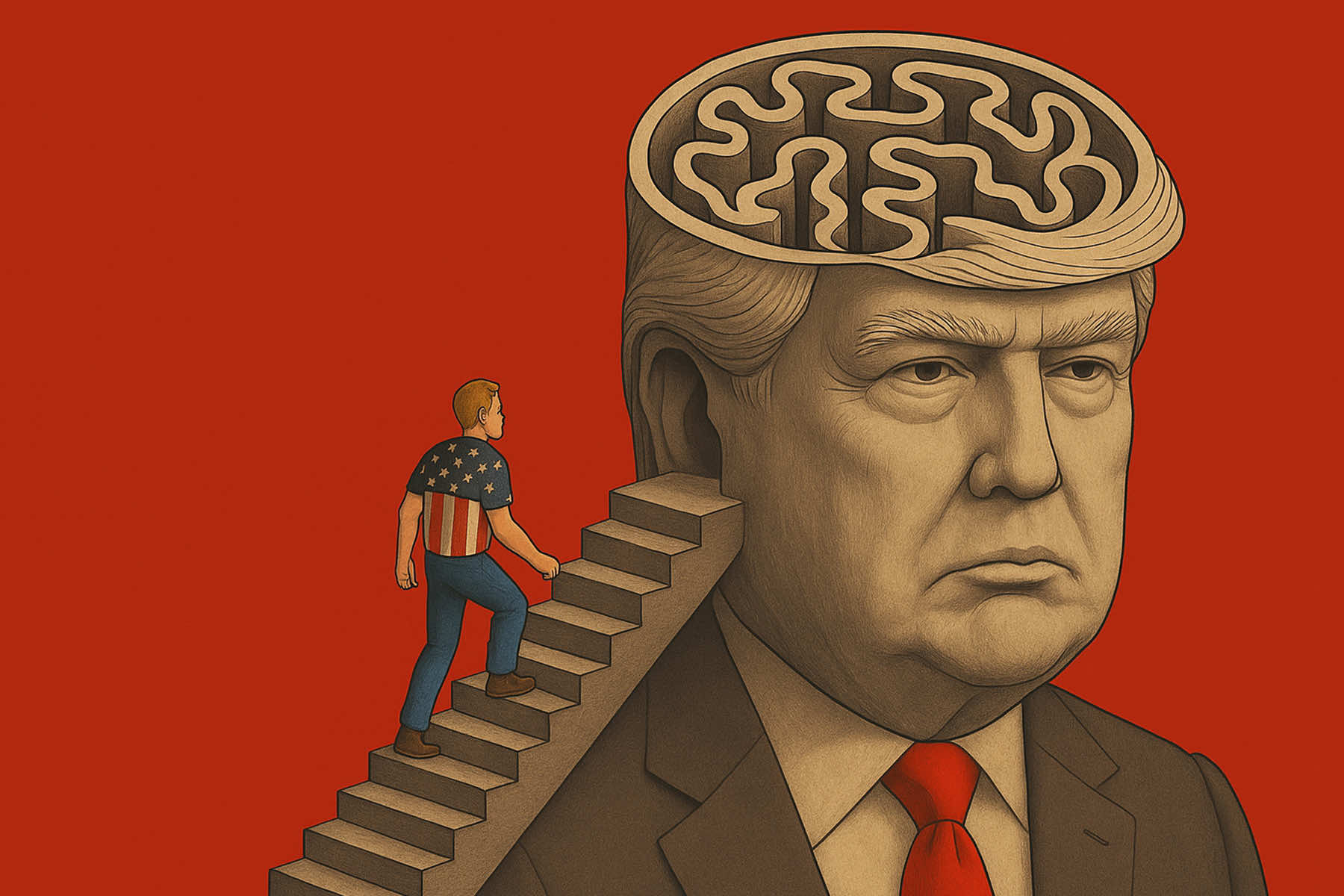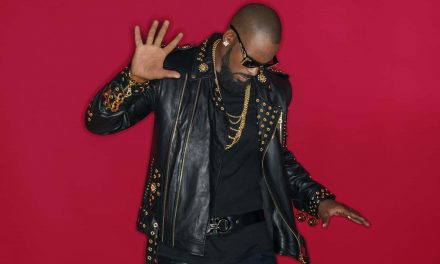
With Donald Trump’s return to the White House in 2025, his political base has emerged as one of the most studied and polarizing forces in American political history.
Hardened through years of social upheaval, conspiracy rhetoric, and loyalty tests, the voting bloc, known as the Make America Great Again (MAGA) movement, has evolved into a subculture marked by deep emotional identification with Trump, rejection of institutional legitimacy, and a worldview shaped less by shared policy preferences than by a shared sense of grievance and defiance.
Journalists, scholars, and political observers have spent years attempting to parse what animates the MAGA base. While no monolithic profile fits all supporters, consistent behavioral and psychological patterns have emerged.
These traits are not drawn from clinical evaluations but rather from longitudinal reporting, public opinion data, and observable behavior in political and civic life.
At the heart of the movement lies a narrative of persecution and betrayal.
For many Trump supporters, their embrace of the convicted felon, despite his observable falsehoods and incendiary rhetoric, is not rooted in traditional conservatism but in a belief that he alone articulates their alienation.
This sentiment is frequently reflected in the language of victimhood: Trump is not merely a candidate, but a martyr under siege by corrupt elites.
That narrative has remained durable in the face of facts that might otherwise disqualify a political leader. Trump’s criminal indictments, his overt efforts to overturn the 2020 election, and his campaign of disinformation have not alienated his base. Such grotesque actions have only deepened its commitment.
In this toxic and distorted dynamic, any attack on Trump is perceived not as a legitimate consequence of the rule of law, but as further evidence of a system rigged against “real Americans.”
This siege mentality is a defining feature of what experts call authoritarian populism. It is a psychological orientation that seeks strong, charismatic leadership to restore perceived lost greatness, often by scapegoating vulnerable outgroups.
For MAGA supporters, that leadership is personalized almost entirely in Trump. His dominance is not ideological, but symbolic. It is a projection of strength, revenge, and transgression against political correctness and institutional norms.
“He says what we’re thinking,” is a common refrain heard at MAGA rallies, repeated in countless interviews with the news media.
The phrase encapsulates the deeply emotional relationship between leader and follower. It is a bond forged not through policy promises, but through shared contempt for perceived enemies. In this paradigm, truth is subordinate to loyalty. Trump’s documented lies about election fraud, immigration crime statistics, or even his failed response to the COVID-19 pandemic are often defended as rhetorical devices rather than deceptions.
Denial of reality, in fact, has become a core feature of the movement. From false claims that the 2020 election was stolen, to denialism around the January 6 Capitol attack, MAGA ideology frequently rewrites events to conform to emotionally satisfying narratives.
This is not a matter of misinformed individuals lacking access to facts. As multiple studies have shown, MAGA supporters often consume vast amounts of political media, but overwhelmingly from hyperpartisan sources that reinforce preexisting views.
The echo chamber effect is amplified by social identity reinforcement. To question Trump, even slightly, is to risk ostracism from the MAGA community.
Public figures who have broken ranks, such as former allies in the GOP who voted for impeachment or certified election results, have been branded as traitors. This intolerance of dissent is central to the movement’s psychology: ambiguity is weakness, nuance is betrayal.
MAGA politics thrives on binaries like us versus them, patriots versus globalists, believers versus “woke” heretics.
This rigid worldview is emotionally satisfying but structurally fragile. It requires constant reinforcement through performative loyalty and ritualized outrage. That is why the movement is replete with juvenile spectacles like the red hats, the flag capes, the chants of “Lock her up” or “Build the wall.” These are not just slogans. They are affirmations of belonging.
Within this political ecosystem, cruelty is often valorized. Trump’s mockery of disabled individuals, his attacks on women, immigrants, and political rivals, all behavior that would normally repulse traditional voters, is celebrated by MAGA supporters as authenticity.
The willingness to offend is rebranded as strength. Political opponents are not wrong. They are enemies. And suffering inflicted on those enemies, whether through policies or rhetoric, becomes a source of joy and validation.
Political psychologists who have extensively studied authoritarian regimes have noted that the appeal of leaders like Trump lies not just in what they promise to do for their followers, but what they promise to do to their enemies.
That promise is not metaphorical. From chants about executing opponents to online fantasies of civil war, there is a strain of gleeful menace in MAGA culture that distinguishes it from earlier iterations of right-wing populism.
This ethos was most vividly on display during the January 6, 2021, insurrection, when Trump supporters stormed the U.S. Capitol in an effort to stop the certification of an election they believed had been stolen.
The attackers were not hiding their identities. Many livestreamed the breach, waved flags bearing Trump’s name, and posed for photos inside congressional offices. Their goal was not covert revolution, it was spectacle. It was to show the world, and each other, that they were willing to fight for their version of dark America which was fueled by hate.
That version of the United States is hierarchical, exclusionary, and nostalgic. MAGA rhetoric often invokes a mythologized past that existed before immigration, feminism, or racial reckoning changed the social landscape. In this false narrative, Trump is less a man than a time machine: a portal back to a country where White, Christian, heterosexual men held uncontested authority.
But MAGA supporters do not see themselves as supremacists. They see themselves as dispossessed. This perception of loss, economic, cultural, and symbolic, fuels a righteous anger. The fact that many MAGA voters live in regions disproportionately affected by deindustrialization and economic decline is not incidental. The movement provides them with a vocabulary of blame.
That anger has become a permanent fixture of right-wing political engagement. Conservative media empires, from Fox News to newer, more extreme outlets like OAN and Newsmax, have built their business models around stoking and monetizing that rage. Every policy proposal by Democrats is cast as a threat. Every social movement for equity is an attack. In this landscape, grievance is an identity.
The structure of MAGA identity is also reinforced through rituals of repetition. Trump rallies function not merely as campaign events but as emotional revival meetings. Attendees chant in unison, jeer at journalists, and celebrate Trump’s perceived triumphs over the establishment. When fact-checkers point out the falsehoods in his speeches, it only reinforces the sense among attendees that the mainstream media cannot be trusted. The correction itself becomes proof of persecution.
Among experts who track radicalization and extremist movements, there has long been concern about how deeply the MAGA movement has normalized what was once considered fringe behavior. Open calls for political violence, previously relegated to militia groups or online trolls, now appear regularly in the rhetoric of elected officials, state party platforms, and viral social media posts.
Among the many authoritarian promises Trump made during his 2024 re-election campaign, “retribution” was a key theme. It echoed authoritarian language about purging civil institutions that no longer shocked his base, it energized them.
It is this embrace of retributive politics that makes the MAGA phenomenon fundamentally different from prior conservative movements in American history. The goal is not limited to policy wins or court appointments.
Trump’s aim is complete domination. His insistence on “total victory” and the repeated framing of the United States as a battlefield under siege leaves no room for democratic compromise.
That worldview has had measurable consequences for democratic norms. Belief in the legitimacy of elections has plummeted among Republicans. A 2024 Pew Research survey found that more than 70% of Trump voters believe that future elections cannot be trusted if their candidate does not win. This erosion of democratic faith is not a side effect, it is an outcome of deliberate messaging.
Trump’s legal troubles, including felony convictions, civil penalties, and federal indictments, paradoxically became sources of pride among his base. Far from weakening his image, the setbacks were reinterpreted as signs of his authenticity and victimhood. In campaign materials, mugshots were repurposed as merchandise. In speeches, Trump likened his plight to political prisoners and religious martyrs. The effect was a persecution complex that reinforced emotional dependency on him as the leader.
Such a dependency mirrors patterns seen in cult dynamics. Leadership is personalized and unquestionable. Outside information is dismissed as hostile. Internal cohesion depends on a shared mythology. Dissent is punished, sometimes violently. Former MAGA figures who have expressed even limited criticism of Trump have faced threats, harassment, and permanent excommunication.
The cult-like nature of the movement has drawn comparisons to authoritarian populist uprisings across the globe. But in the United States, what makes MAGA uniquely dangerous is its entanglement with the structures of government and law enforcement. From local sheriff’s offices to Congressional caucuses, the ideology has found institutional footholds. In some red states, loyalty to Trump supersedes fidelity to law, precedent, or even the U.S. Constitution.
The shift has had real-world consequences. In recent years, Trump-allied local officials have refused to certify election results, threatened school board members, and pushed conspiracy-fueled audits. The post-2020 movement to take over county election boards, replace secretaries of state, and run MAGA loyalists for judicial seats signals a long-term strategy: control the levers of state power to enforce a radical vision of political loyalty.
Despite these threats to democratic governance, the MAGA movement remains deeply effective at presenting itself as populist and grassroots. Many of its most ardent adherents are not political operatives but ordinary people who have been radicalized by years of media distortion, cultural anxiety, and economic stagnation. They do not see themselves as enemies of democracy. They believe they are its last defenders.
That belief is what makes the MAGA phenomenon difficult to combat through conventional politics. Rational debate, fact-based appeals, or procedural fairness are often rejected as weak or irrelevant. What is valued instead is strength, domination, and purity. The MAGA base is not waiting to be persuaded. It is preparing to impose its version of truth.
As America endures a second Trump presidency, the nation is processing both a political crisis and a psychological one. A significant portion of the population derives identity, purpose, and meaning from a movement defined by disinformation, authoritarian values, and contempt for democratic norms.
And unlike previous political eras, there is no shared set of facts on which to build a compromise. The MAGA movement’s most enduring legacy may not be a single law or court ruling, but a cultural fracture so deep that it renders reconciliation nearly impossible.
In place of shared human values, it offers the politics of permanent warfare that are emotional, existential, and unrelenting.
© Art
Isaac Trevik














